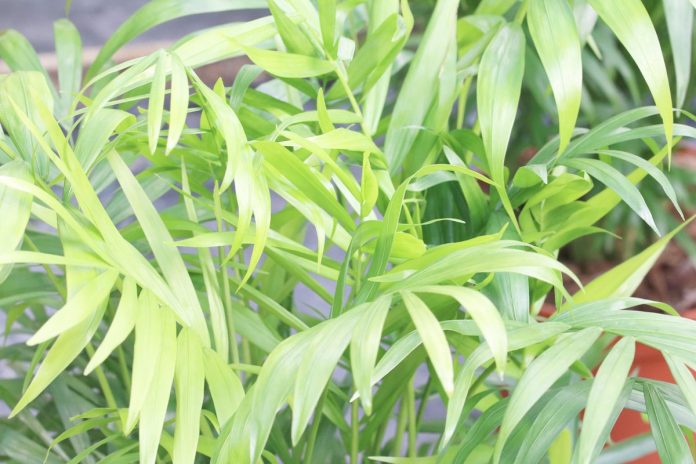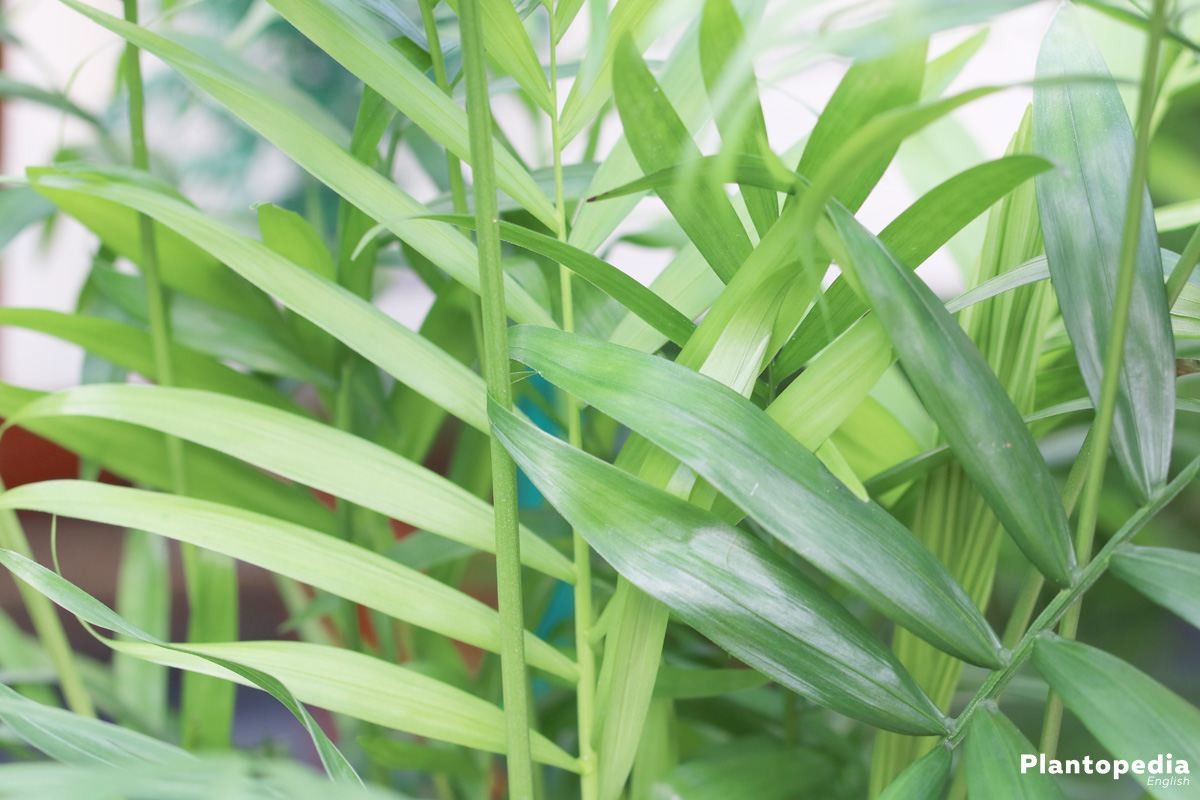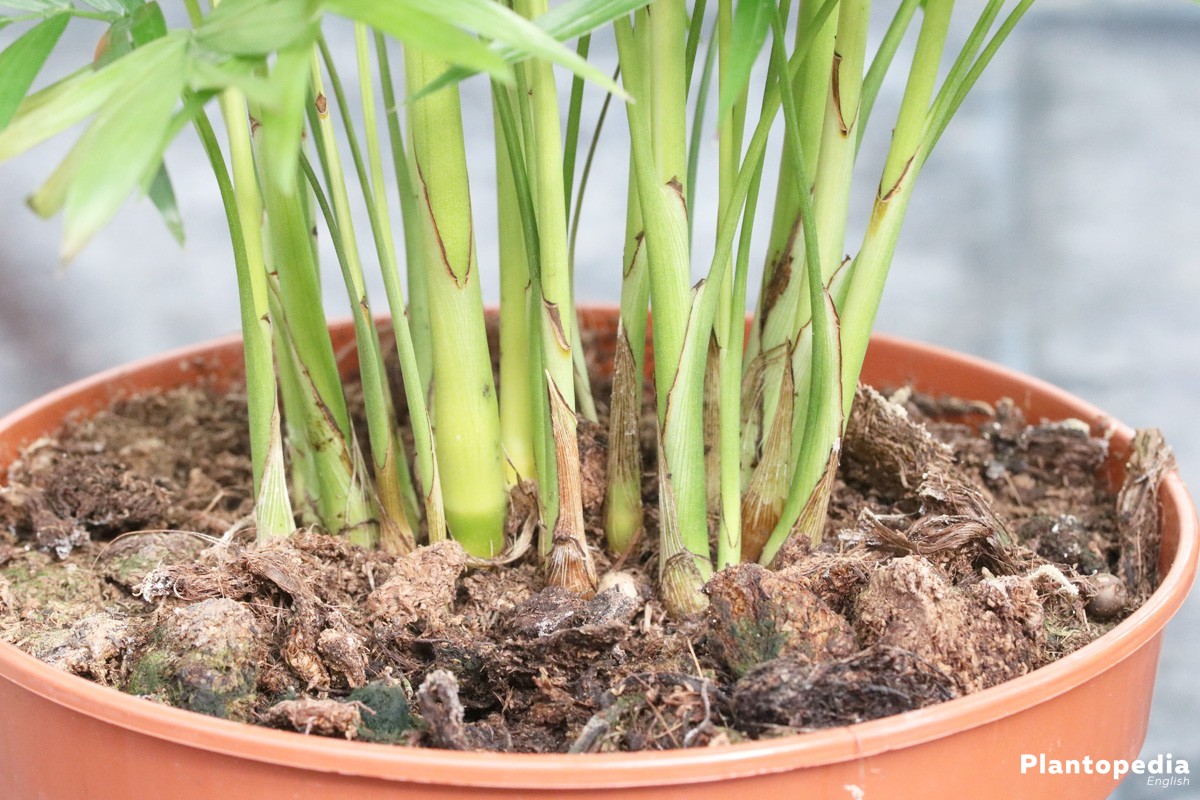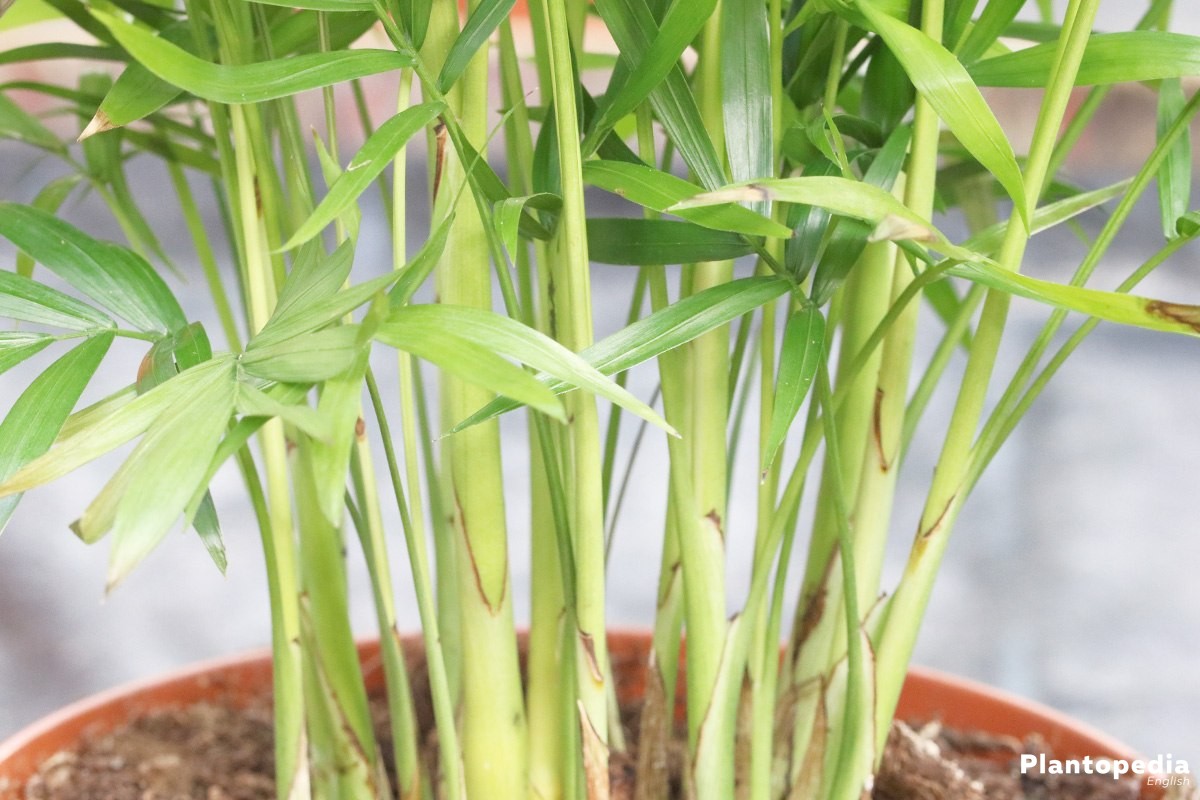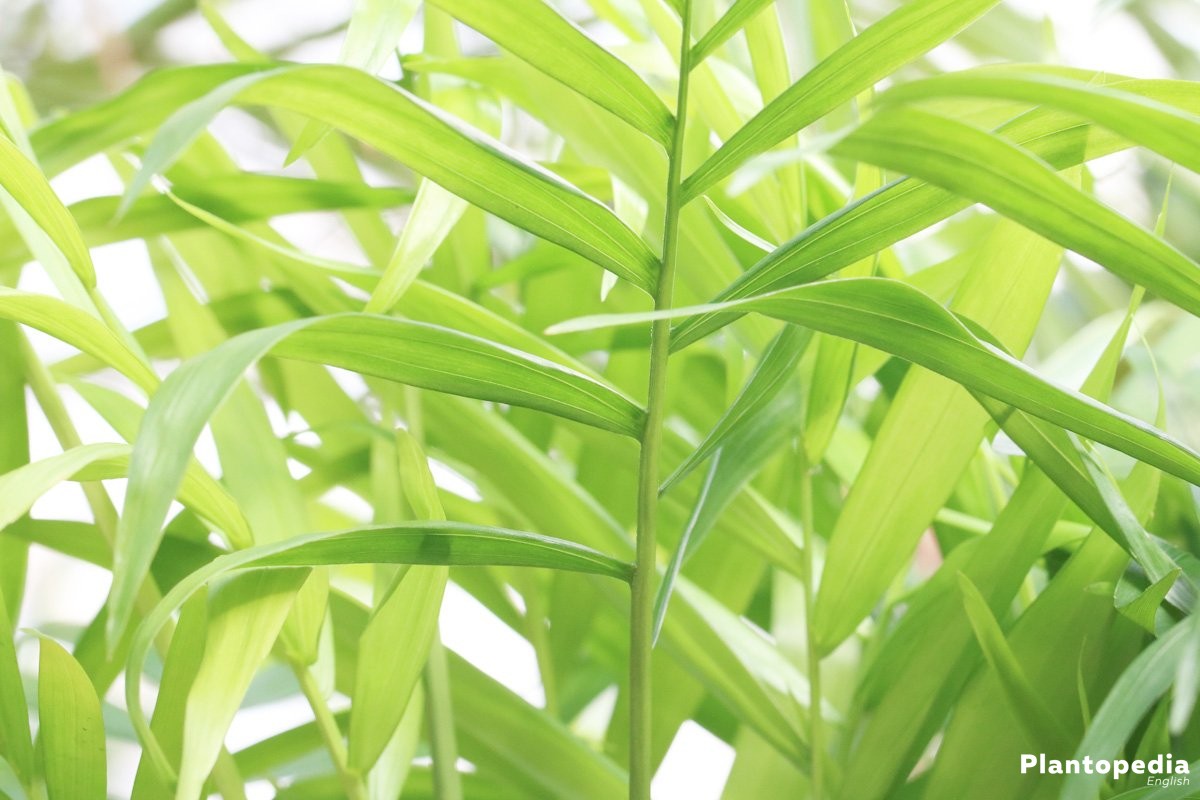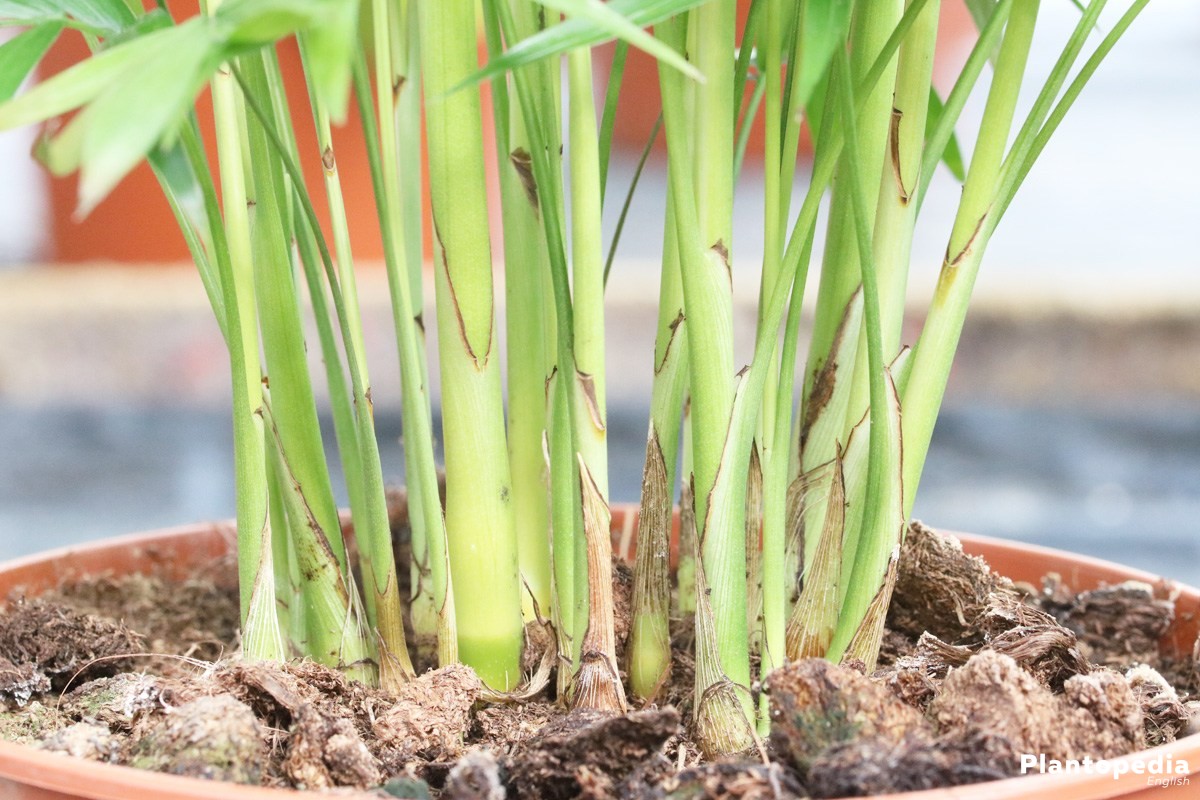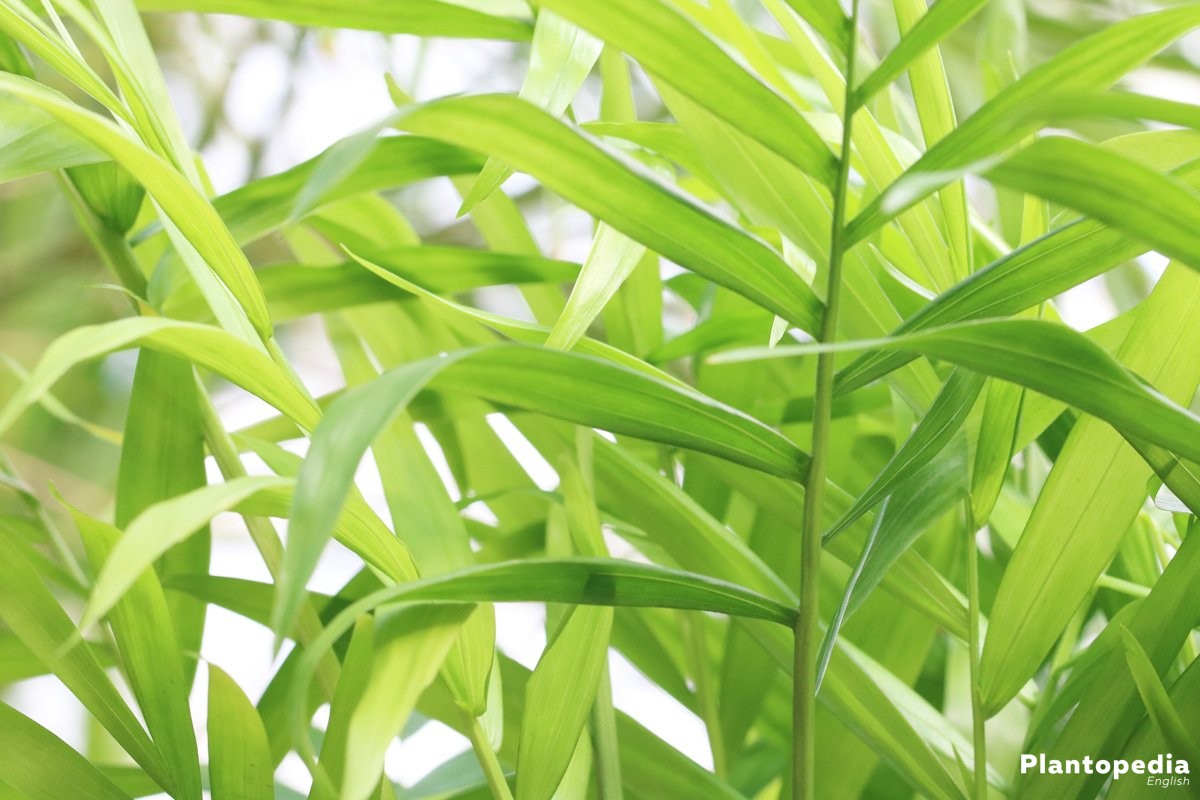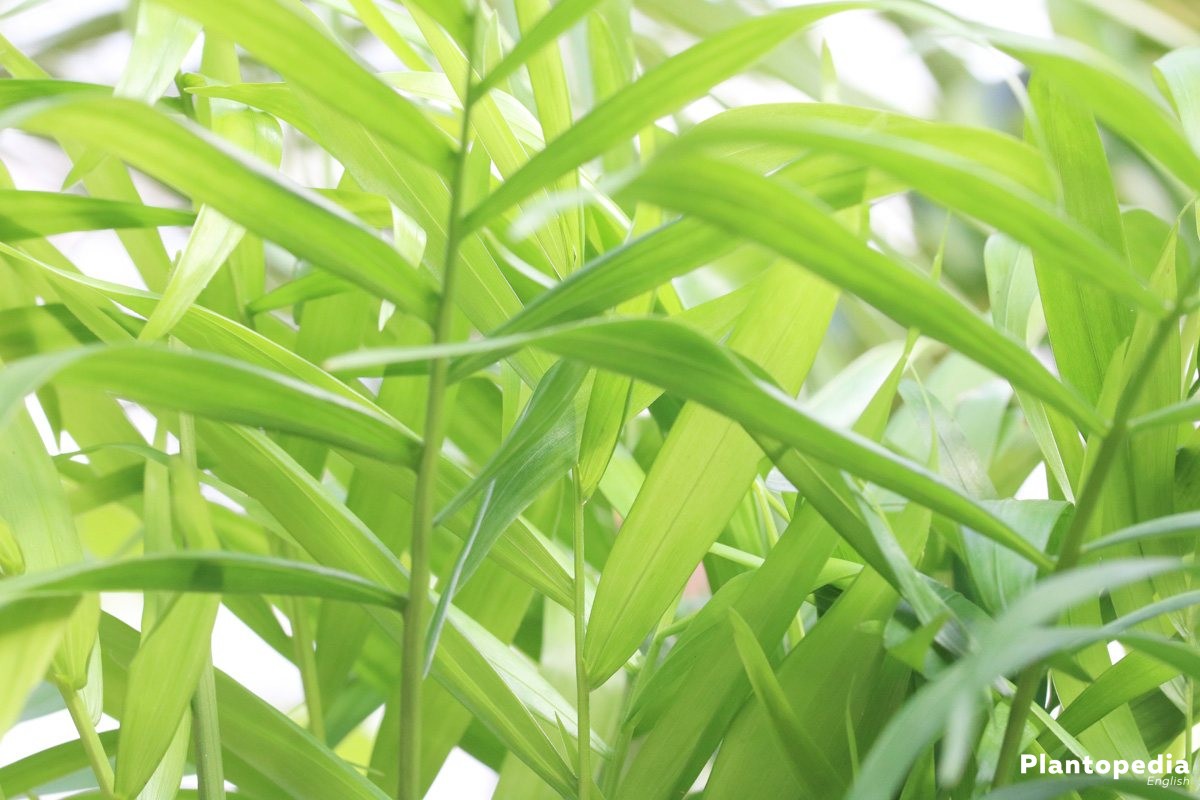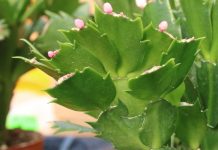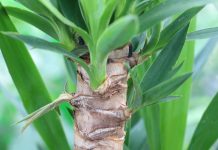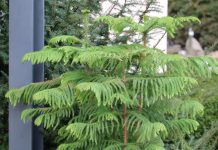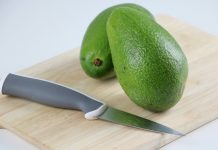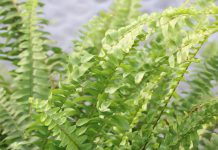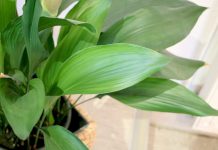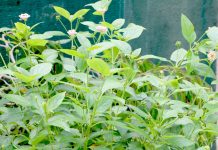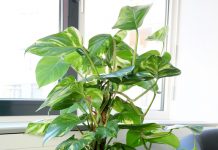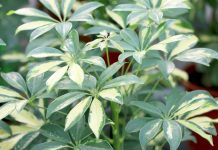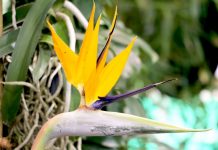The Mountain Palm is being elevated to one of the most popular evergreen indoor plants in central Europe by its thick but lean lilac leafs which are slightly bent. It has its origins in the mountainous regions of Central America and is very resistible and low maintenance. Which is why the decorative indoor plant is so well suited for beginners with little plant experience. We will show you how to ideally treat your Chamaedorea elegans and how to encourage growth with this instruction.
Plant Profile
Contents
- Plant family: Palmae
- Species: Mountain Palms (Chamaedorea)
- Trivial name: Mexican mountain palm
- Origin: Central America, especially Mexico and Guatemala
- Growth height: Mostly 30 cm to 130 cm, rarely up to 200 cm
- evergreen, feathered leafs
- plants can grow panicled inflorescence with small yellow blossoms
- lean, thick stems growing alongside with wooden in time
- slow growth
The Mountain Palm might be the most popular indoor palm in our areas. It brings a piece of the rain forest into the house and looks attractive with its fine, feathered leafs. The evergreen indoor mountain palm grows relatively slow and is very low maintenance.
It can be cultivated without much effort and thanks you for it with a constantly thick growth. You will be informed in this care instruction how to properly cultivate the delicate indoor plant so that you can enjoy the growth for years to come.
Care
The Chamaedorea elegans calls home the Central American countries Mexico and Guatemala where it thrives in the undergrowth of the stretched out mountain forests. The natural growth conditions are being partially imitated with the care procedure. If you follow the simple care instructions for the Chamaedorea elegans, you will get to enjoy the evergreen growth for many years.
The mountain palm generally counts as relatively insensitive and low maintenance. Which is why the care for it is low maintenance as well. The decorative indoor plants forgives small mistakes which is why it can be cultivated by beginners without any problems.
Location
A shady to half shady location is ideal for the mountain palm.
Take care of the following:
- the plant does not tolerate an extraordinarily long direct sun exposure, especially midday as the sun bleaches out the fine and soft leafs and leaves behind yellow to brown spots
- if the Chamaedorea elegans is to be placed on the windowsill then you should pick spots facing the east or west with exposure to the morning or evening sun
- most mountain palms are also thriving at windows facing the north
- keep in mind, that the plant grows significantly slower if placed at a shady location
- if it grows very long stems with especially tiny weaves it is a clear indication that the chosen location is too dark
- one can expose the mountain palm to the weaker winter sun throughout the day with no problems
The room should be equally air conditioned throughout the whole year. Ideal are temperatures lying between 18 and 22 degrees Celsius. In winter, 13 and 20 degrees are sufficient. The ornamental palm can, after the ice holies, be placed outside on the balcony or the terrace.
Choose a shady location in this case. It can however be kept inside the room throughout the year. In this case, high humidity is recommended. The robust mountain palm still handles dry air really well.
Keep in mind however:
- when the shoot tips take on a brown color it is a sign for the air humidity being too low
- in this case, fill a bowl with water
- put gravel inside and place the mountain palm with the pot inside the bowl.
- additionally spray the weave with lime free water
Substrate
The Chamaedorea elegans thrives best in a permeable, nutrient low substrate with a slightly alkaline pH value. Use palm earth or a mixture out of one half compost and the other foliage earth. Regular flower earth should be mixed with sand. The pH value of the substrate can be determined with a test stick.
If the result is basic, it can be offset with the adding of dolime into the water. You can also cultivate the mountain palm in hydro culture. As a familiarization is often difficult it is imperative that the plant is being cultivated in the same manner from early on.
Replanting
The ornamental palm has to be replanted as soon as the roots of the Chamaedorea elegans have completely rooted through the pot. This is the case only every few years as it grows slowly.
This is how you proceed when replanting:
- pick a pot which is bigger than its predecessor so that the roots can spread. It should primarily be higher so that the roots do not grow downwards
- take the plant out of its vessel and expose the roots by carefully shaking of the substrate
- place the mountain palm in a new pot and distribute fresh substrate around the root bale
- slightly press on the earth
When replanting you have to take a focus on not damaging the roots as otherwise the growth of the plant will slow down. It is ideal to replant the Chamaedorea elegans in spring.
Watering
The mountain palm is low maintenance and can even be watered with hard tap water.
Take a focus on the following when watering:
- the root bale should never dry out but be kept moist at most times
- when the surface of the substrate begun to dry you can continue to water
- the Chamaedorea elegans should be watered in a two day cycle in summer
- additionally you can spray water on the leafs in the warm time of the year
- the mountain palm has low water needs in winter and it thus suffices to merely keep the substrate wet during this season
Avoid the occurrence of water logging by choosing a pot with drainage holes. Some surplus water can be left inside the underlay for some hours in summer as the indoor plant has high water needs.
Fertilizing
The mountain palm should be supplied with ordinary fertilizer between March and September approximately every two to three weeks. Half of the recommended dosage suffices. The fertilizer is ideally placed inside the water. You can alternatively use sticks.
Fertilizer is often not needed during the first year of the plant as well as the first year after replanting as ordinary substrate contains a sufficient amount of nutrients. Additionally, one encourages the spreading and growing of the roots.
Cutting
Completely cut of the withered weave with a distance of about one centimeter from the stem. In order to accelerate the growth of the mountain palm you can also cut the rather insignificant inflorescence near the base which are being grown by the plant from the second or third year.
This way, the Chamaedorea elegans does not have to waste strength in its development. This way, growth is being encouraged. Whoever does not want to miss the small, yellow blossoms but is not interested in seeds should immediately remove the inflorescence as soon as it is withered. Form cuts are not required for the mountain palm.
Multiplication
The Chamaedorea elegans can be multiplied by seeds or by saplings.
Seeds
Whoever wants to grow the slowly growing mountain palms from seeds requires lots of attention.
As the seeds lose its ability to germ very swiftly it should be seeded out swiftly:
- for that you place the seeds with a hard shell in a pot with warm water to let it soak for two days
- subsequently fill a pot with a loose substrate like cultivation soil or a mixture of regular flower soil and sand
- seed out the seeds and cover it with a thick layer of substrate
- place the pot at a warm location with a room temperature of 25 to 30 degrees Celsius and constantly keep the earth moist
- prevent the direct exposure to midday sun
- in order to create a warm moist climate and simultaneously prevent insects laying their eggs, the pot should be covered with plastic wrap and wrapped with a transparent plastic bag
- the young plant can move to a cooler location (see paragraph “Location”), when seedlings which several centimeters in size have grown
- all coverings should furthermore be removed
The seeds can be purchased in a specialist store. The Chamaedorea elegans grows same sex blossoms in the pot which is why one needs female and male plants for the growth of seeds. As these can not be distinguished by another you will need another two plants. Tuffs are ideal where several plants are growing together in one pot. The possibility is big that male as well as female specimens are included.
These can be artificially inseminated with the hopes of luck:
- go over all blossoms several times a day with a fine brush
- if successful, green fruits will grow after the blossom
- when the fruits are ripe, they take on a black color
- when the first ones fall of, you can harvest all of them
Saplings
Saplings will frequently grow on the foot of the Chamaedorea elegans which you can cut of with a sharp knife. Fill a pot with cultivation earth and put the shoot inside. You can previously immerse the junction of the sapling in rooting powder.
Place a transparent plastic bag over the pot to create a warm and moist climate. This encourages the growth of the young plant. If the sapling begins to grow you can remove the plant. From this point on, the mountain palm should be regularly watered.
Hibernation
The Chamaodorea elegans is not winter hardy and has to hibernate inside. In this time, it prefers a bright and cool spot. Ideal are temperatures between 13 and 18 degrees Celsius. During this time it does not have to be fertilized and only moderately watered. Take a focus on enough light as the shoots wither otherwise. This way you can let the mountain palm hibernate in a winter garden or staircase.
Parasites
In the case of unfavorable conditions, the plant is being weakened and attracts spider mites or scale insects. The mountain palm is exposed to parasites in winter if placed at warm locations with low humidity. Affected plants immediately have to be isolated and should be swiftly treated.
Spider mites
The weaves take on a yellow color and a fine web on the stem and the lower sides of the leafs in the case of infestation. As the parasites do not tolerate high humidity, the plant should be meticulously watered and be sprayed on with water. Subsequently place a transparent plastic bag over the entire plant and fixate it on the pot.
This way you create a moist and warm climate by the spider mites dying after a short while. Alternatively, the predatory mites from a specialist store can be used to fight parasites. The spider mites can be sprayed with a acaricide.
Scale insects
Scale insects are not stopping with the mountain palm as well. They suck out the plant juice which makes the leafs gradually take on a brown color. The well disguised scale insects are taking position near the leaf veins, secrete honeydew and can be indicated as slight mounds when meticulously inspected.
In the case of a light infestation they can be cleaned out with oil or a soap spirit solution. As the parasites are protected with its shell like body, a systematic plant protection solution helps best when the infestation occurred.
Varieties
There are more than 100 varieties belonging to the species Chamaedorea aside from the Chamaedorea variety. The mountain palm is widest spread as an indoor plant. One occasionally finds the delicate Chamaedorea metallica, the long leafed Chamaedorea graminifolia or the Chamaedorea ernesti-augustii whose main characteristic are the unfeathered leafs. Additionally there are hybrids like the Chamaedorea elegans Bella.

